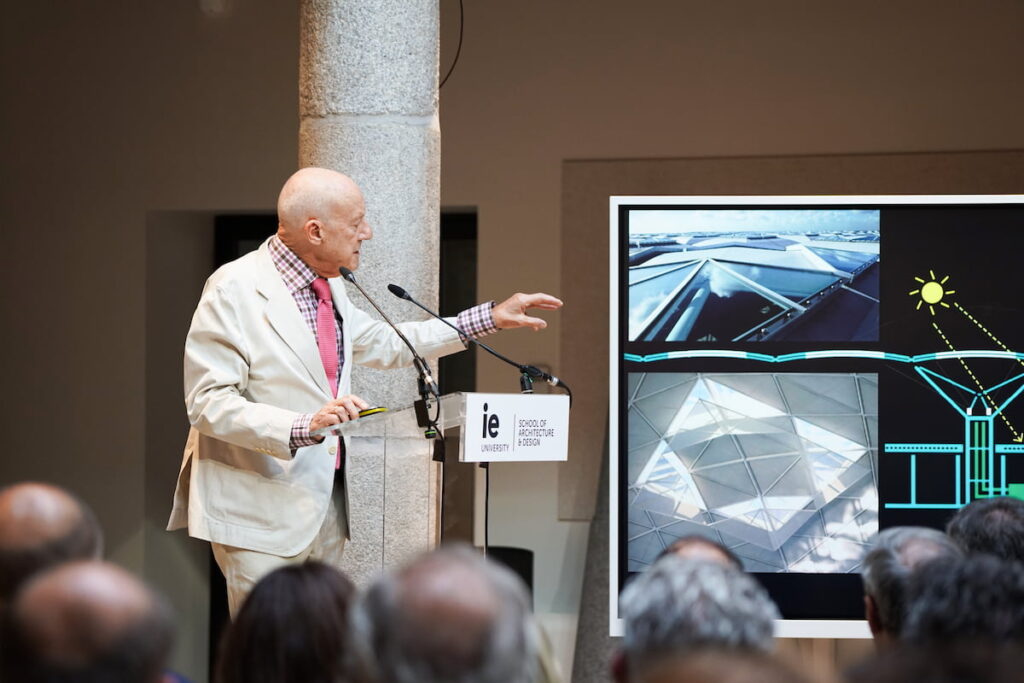Being an architect means reshaping skylines, cities and experiences. And it’s easy to believe that the fastest route to impact is to join one of the largest architecture firms in the world. After all, lists like the Building Design WA100 show firms in the thousands of staff, multi-billion-dollar fee-incomes and global office footprints. Yet joining “big” doesn’t automatically equal making a meaningful difference—or unlocking individual creativity.
In this article we explore what “scale” really means for architecture firms.

We’ll look at how rankings measure the size of the biggest architecture firms through staff numbers, revenue and global reach. We’ll also map how some of the top architect firms wield their scale, and how others operate at smaller size but punch above their weight in innovation.
Because asking which architecture firm is the biggest might not be the right question. Rather, what kind of “big” do you want to be a part of? Are you chasing head-count or creative influence? Market share or disruptive impact?
Let’s take a look.
Top 10 biggest architecture firms in the world
If you want to see what “scale” looks like in architecture, start with the names that shape skylines across continents. According to the latest WA100 and Building Design rankings, the global heavyweights include:
Together they employ tens of thousands of professionals. That happens from offices in London to Tokyo to San Francisco, and generate billions in annual design revenue. Their portfolios range from megaprojects like the Shanghai Tower (Gensler) and Hong Kong International Airport (Foster + Partners) to more concept-driven landmarks like the Bibliotheca Alexandrina (Snohetta) and the LEGO House (BIG). Each has become a reference point—not only for how architecture scales, but how it adapts to technology, sustainability, and culture on a global stage.
Of course, “biggest” depends on measurement. Gensler tops most rankings by headcount and revenue, while firms like Zaha Hadid Architects or Snohetta rank lower in size yet lead in creative influence. Some, like Sweco and HDR, lead by integrating architecture with engineering and urban planning; others, like MVRDV or BIG, push boundaries through experimentation and media presence. So while global rankings may capture reach and resources, they don’t always speak clearly for imagination.
What are the biggest architecture firms in the US in 2025?
In the United States, scale meets strategy. Giants like Gensler, Perkins&Will, HDR, HOK, and SOM dominate through reach and reinvention. Gensler fuses design with behavioral data, Perkins&Will advances sustainability and equity, HDR excels in healthcare and science, HOK balances form and performance, and SOM sets enduring standards for innovation and ambition.
The US architecture market acts as a testing ground for what’s next—where new materials, technologies, and business models emerge before going global.
These firms shape skylines and export frameworks for a data-informed, interdisciplinary, impact-driven profession.

For emerging architects, understanding this ecosystem means seeing design as both creative vision and strategic enterprise—an approach central to IE School of Architecture & Design’s mission to teach students to think boldly and build with purpose.
What are the biggest architecture firms in Europe?
Europe’s architectural heavyweights—Foster + Partners, Sweco, Zaha Hadid Architects, Herzog & de Meuron, and Renzo Piano Building Workshop—blend legacy with reinvention. Foster + Partners fuses sustainable technology with visionary urbanism, Sweco drives large-scale infrastructure and climate-resilient design, Zaha Hadid Architects pushes the limits of form, Herzog & de Meuron explores material honesty and atmosphere, and Renzo Piano champions humane modernism.
Together, these top architecture firms define a continent that turns heritage into a platform for innovation.

Europe’s architectural identity thrives on balance—respect for context paired with a drive toward sustainable, civic-minded futures. Across awards and industry gatherings, the focus remains on design that merges creativity with social and environmental responsibility.
Within this ecosystem, architects learn to think in layers—cultural, ecological, and technological—proving that design excellence begins where ambition meets accountability.
How do you rank architecture firms?
We typically rank architecture firms initially using traditional, quantifiable metrics that allow for clear comparison. These include:
1. Fee-revenue: How much work the firm bills annually, often broken down by region or discipline.
2. Number of licensed architects/staff: The headcount of qualified professionals who generate fees and carry responsibility.
3. Project volume across sectors and geographies: How many and what types of projects the firm delivers (commercial, institutional, residential, infrastructure) and in how many countries.
These measures help us create a baseline league table of the top ten firms, comparable in size, global scale and economic reach.
How do we measure the nuances?
1. Creative vision and design philosophy: Does the firm articulate a coherent approach to form, experience and context?
2. Sustainability and innovation: From low-carbon strategies to use of advanced materials and circular-economy thinking.
3. Cultural or social impact: How projects shape communities, support equity, heritage, place-making or social inclusion.
4. Integration of technology: How the firm uses AI, BIM, parametric design tools, digital twins, sensors and data analytics to both design and operate buildings.
By combining quantitative metrics with qualitative dimensions, we present a fuller view of how firms perform and evolve. The leading practices are already moving in step with the priorities of IE School of Architecture & Design—adopting digital transformation through data-driven delivery models, embedding sustainability as a strategic advantage, and reshaping their structures so architects, engineers, technologists, and operational specialists work in integrated teams. These shifts define how design excellence, technology, and impact are converging to shape the future of architectural practice.
Is a big firm the right fit for you?
Every architect faces this question sooner or later. Joining a global practice means access to scale—projects that reshape cities and span continents. Yet smaller studios offer something different. Proximity to mentors; creative ownership; the chance to experiment freely without layers of hierarchy. The real choice isn’t about size—it’s about purpose. What kind of architect do you want to be? Someone driving global transformation through complex systems, or someone redefining craft and culture at a local scale? Each path demands clarity about your values, your ambitions, and how you want your work to shape the world.
And you can join the best architecture firms of 2025 with IE School of Architecture & Design.

At IE School of Architecture & Design, we see those paths as deeply connected. The world’s most forward-thinking firms regularly engage with our students through studio collaborations, design juries, and visiting lectures. At the recent opening of our Creative Campus, Lord Norman Foster offered a keynote that explored the creative process behind his latest project—JPMorgan Chase’s new headquarters in New York—while praising the school’s innovative facilities and collaborative spirit. His visit captured the essence of what defines our ecosystem: a living exchange between education, experimentation, and real-world design leadership.
Alumni now work across global powerhouses and agile, boutique studios leading research in sustainability, adaptive reuse, and digital fabrication. This constant dialogue keeps our programs aligned with the profession’s real momentum. It also gives students a front-row seat to how innovation happens in practice. Wherever your next step takes you, the foundation you build here will connect you to a global network of architects, designers and thinkers. And that’s the next step in shaping built environments with boldness, responsibility, and vision.
Access the world’s biggest architecture firms with a top education
Find out how the Master in Architecture can elevate you to success.

Benjamin is the editor of Uncover IE. His writing is featured in the LAMDA Verse and Prose Anthology Vol. 19, The Primer and Moonflake Press. Benjamin provided translation for “FalseStuff: La Muerte de las Musas”, winner of Best Theatre Show at the Max Awards 2024.
Benjamin was shortlisted for the Bristol Old Vic Open Sessions 2016 and the Alpine Fellowship Writing Prize 2023.






